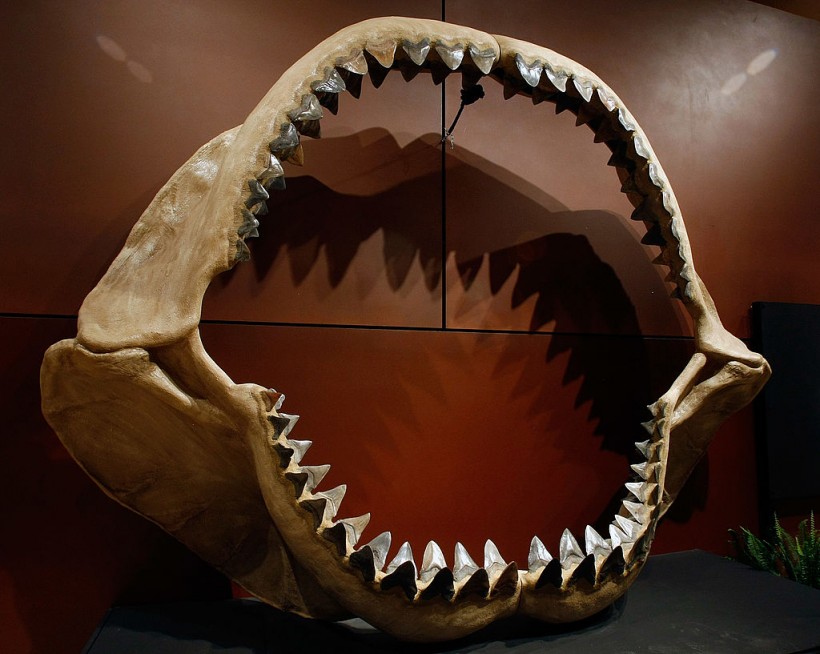The megalodon is one of the coolest prehistoric animals loved by many people. Just like T-Rex (Tyrannosaurus Rex), this ancestor of great whites and other sharks is also featured in numerous movies.
The latest Hollywood movie that featured a megalodon is "The Meg," which was released in the U.S. back in 2018. It was followed by its sequel, "Meg 2: The Trench."

One of the world's largest sets of shark jaws comprised of about 180 fossil teeth from the prehistoric species, Carcharocles megalodon, which grew to the size of a school bus, is displayed at the Venetian Resort Hotel Casino September 30, 2009, in Las Vegas, Nevada.
These two movies and other films showcasing the prehistoric shark have one thing in common; depicting the megalodon as a bulky and more superior version of great whites.
However, scientists claim that this could be incorrect. Here's what a more accurate depiction of Megalodon looks like.
More Accurate Megalodon Depiction Shared by Scientists
A new study, which was published in the Palaeontologia Electronica journal, claims that the traditional megalodon depiction is flawed. Involved scientists said that this isn't what a new analysis showed.
According to The Guardian's latest report, the new study argued that past reconstructions of the extinct shark were incorrect since scientists drew on an assumption that this megatooth shark resembled a larger and more superior version of the great white shark.
To prove their point, involved experts used an incomplete set of megalodon fossil vertebrae. They used this fossil to conduct a new analysis of measurements, which suggests it looked different from what older studies claim it to be.
"Our study suggests that the modern great white shark may not necessarily serve as a good modern analog for assessing at least certain aspects of its biology, including its size," explained the study's senior author, Prof. Kenshu Shimada.
However, Shimada, a palaeobiologist at DePaul University in Chicago, clarified that they still need to discover at least one complete megalodon skeleton to be more confident about their new depiction, especially when it comes to the prehistoric animal's size and body form.
Related Article: Killer Whale Encounter? Half-Eaten Great White Shark Found on Australian Beach Sparks Investigation
Slimmer, Less Powerful Swimmer Than Great White Sharks

A young child looks at a Megalodon on display during the “Jurassic Quest” experience at Broward County Convention Center on July 08, 2022, in Fort Lauderdale, Florida. Fans of dinosaurs can walk through moving and roaring animatronic replicas of the now-extinct creatures during the three-day event.
Unlike what experts recently claimed, the new study suggested that megalodons are slimmer and less powerful swimmers compared to modern-day great white sharks, as reported by Forbes.
"The remarkably simple evidence that O. megalodon had a more slender body than the great white shark was hidden in plain sight," explained Prof. Shimada.
He added that their latest findings are consistent with his previous study, which suggested that megalodon could be a slow-cruising shark, with occasional burst swimming capability to capture smaller aquatic animals.
Kenshu explained that their new study is critical since deciphering megalodon's biology is important to understanding how large carnivores play in the context of marine ecosystem evolution.
Related Article: Skull From Over 70 Million Years Ago May Have Revealed New Dinosaur Related to T. Rex








